Railway - News
The storm 'Per' hit ÖkJ on January 14. Approximately 70 trees fell down, 10 of them on top of the track. Clearing has already started and on February 3-4 a total of 6 loaded trains transported logs to the off-loadind by the road.
A scidder is used to pull the logs to a suitable loading place along the track. This weekend we chose trees that were within a 100 meters from the nearest track.
The logs are hoisted directly from the scidder to the timber wagon by the means of one of ÖkJ's portable cranes. Logs are between 3,7 and 5,7 meters long. The timber wagon used is 6,0 meters long.
The loading site is situated on top of ÖkJ's longest and steepest incline which in combination with the lack of brakes on the wagons makes it impossible to bring down more than one loaded wagon at a time. The distance to the off loading site is 1 km. This winterday the temperature was +5 degrees, hardly any snow but some ice that had to be cut away from the track.
The unloading is done from a site where the track runs on a slope above the road so that the logs can simply roll off the wagon and down to the road. No crane is needed here. The timber is sold and will be collected within a few days.

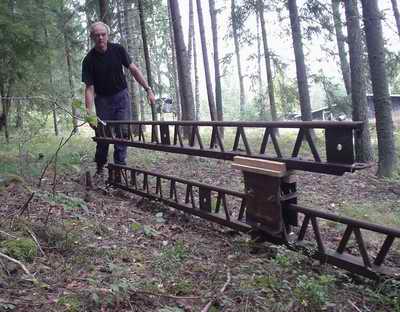
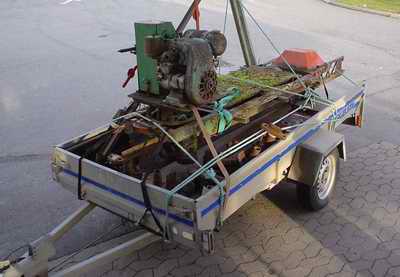

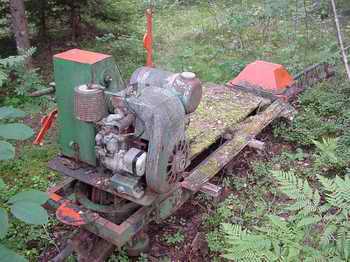
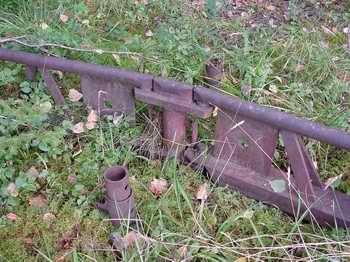

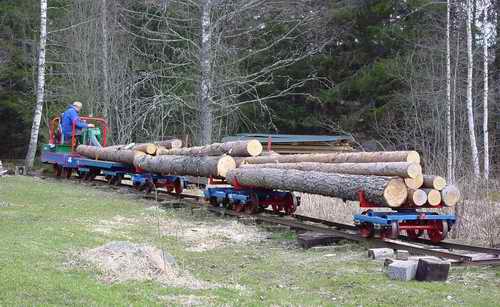
Two pairs of timber trucks and a flat wagon is hooked up to the Simplex (ÖkJ 4).
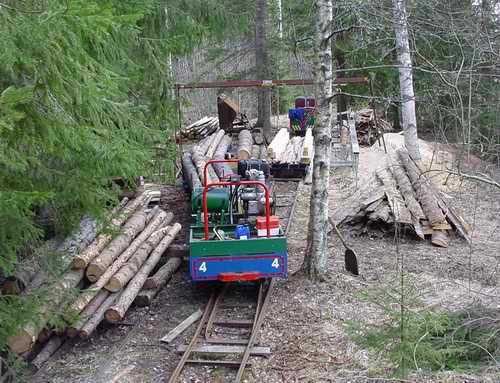
Two loaded timber trucks are shifted in under the crane. The saw, a Solo-saw, can be seen to the right of the flat wagon with freshly sawed planks. In the back is a skip for saw dust transport.
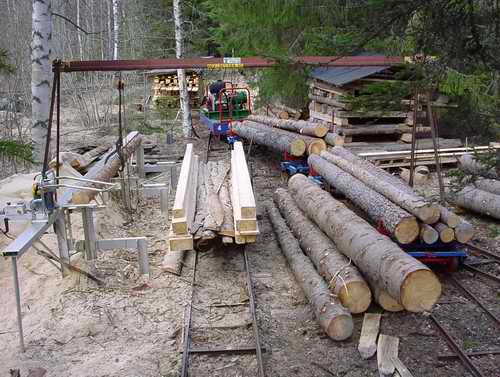
A view from the other direction. To the left is the Solo-saw.
In some places the track is blocked by single trees. This spruce is already cleared
Here the track is invisible ! At least 50 big spruces lias across the track. A harvester will be used as it's to dangerous to clear this manually.
Clearing work in progress.
Loading is done by simple means
ÖkJ has its own saw mill, a Solosåg made by Logosol. The logs are unloaded and will be processed when spring comes.
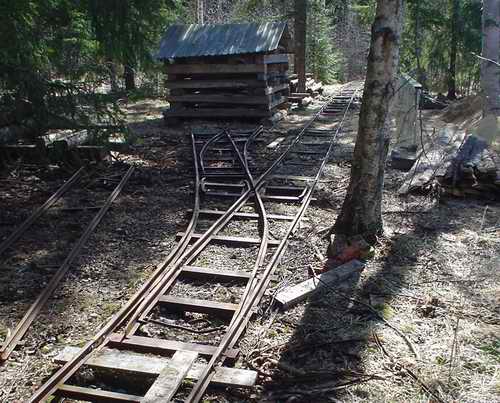
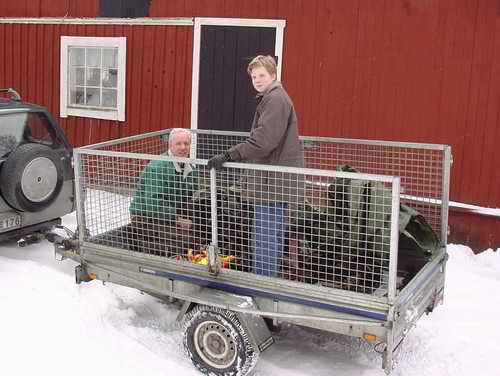
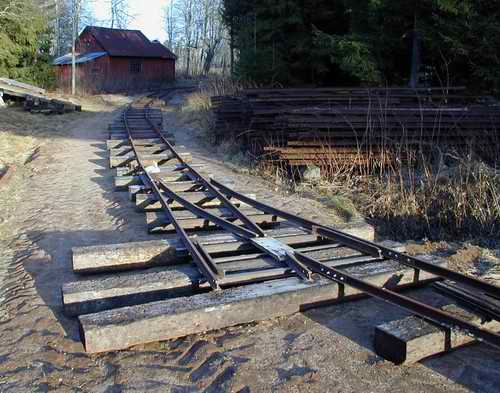
No 5 with passenger train
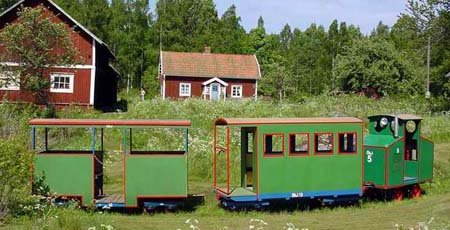
Loco 5 with passenger carriages 12 and 13 at Örkaggsnas in Tiveden, Sweden (June 2003)
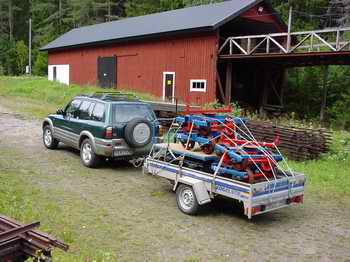
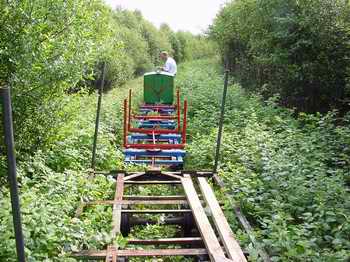
Despite that a locomotive was available I decided to use my own equipment for the operation. ÖkJ 1, two pairs of timber trucks and one flat car was brought to the moss.
Hardly any trains has run over the line for several years. On the first part up from the peat factory the track was not visible because of all the foliage.
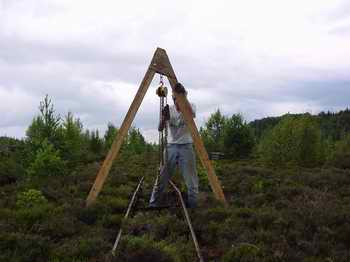
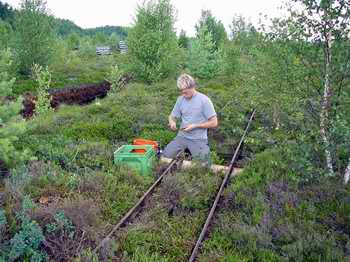
The spur that was allocated to ÖkJ was laid out in the middle of the 1990´s but never saw any traffic. Since then the track has sunk down into the moss and a crane had to be used to lift it up again.
With the track lifted the joints were taken away. Stainless screws and nuts were used. 4-6 sections were made loose, loaded on a wagon and the train moved forward.

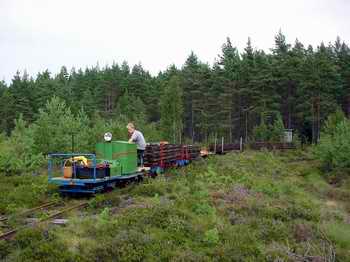
We loaded 10 sections, 50 meters of track on each wagon. The rails were welded to 5 meter long frames. The rail weight was 7 and 8 kg/m, each frame weighted about 100 kg. Our spur was at the far end of the moss 2,5 km away. It took 45 minutes to drive home with a loaded train.
This train is loaded with 200 meters of track weghing 4 tons. It took us four long days to lift and bring home 500 meters of track. Today most of the main line is gone, a few grown-over spurs remain.

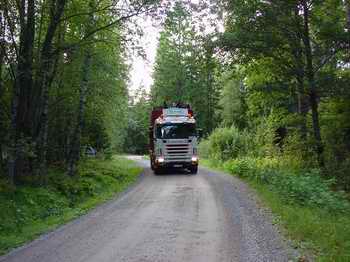
A couple of weeks later I hired a timber lorry to transport the rails home to ÖkJ. The lorry was full, 10 tons and maximum height !
The lorry is approaching Örkaggsnäs. Half an hour later the rails were unloaded and put in neat stacks beside the road. All what remains now is to build 500 meters of new railway. It will keep me busy for some time !
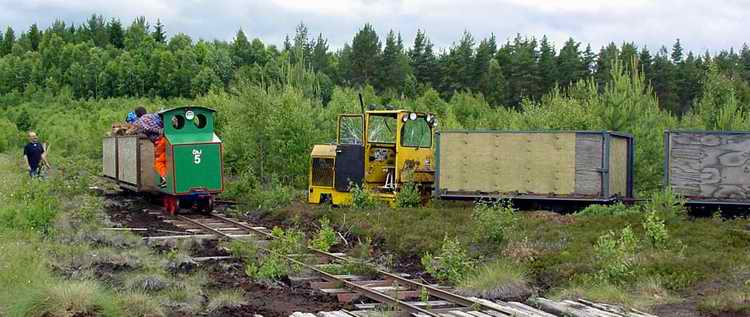
Click here to see the peat wagons being loaded. (320x240 pixels, 15 sec)
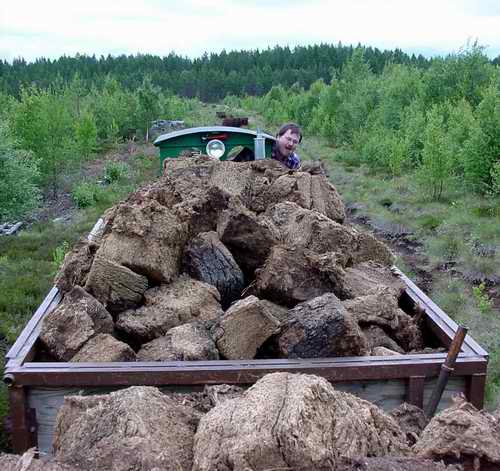
View from the loaded train. Magnus from Aska Vedbana is engineer
Click here to see ÖkJ 5 with loaded wagons (320x240, pixels, 15 sec)
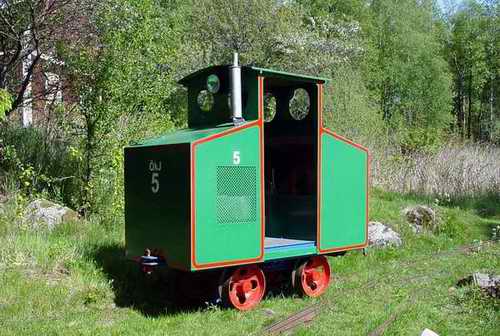

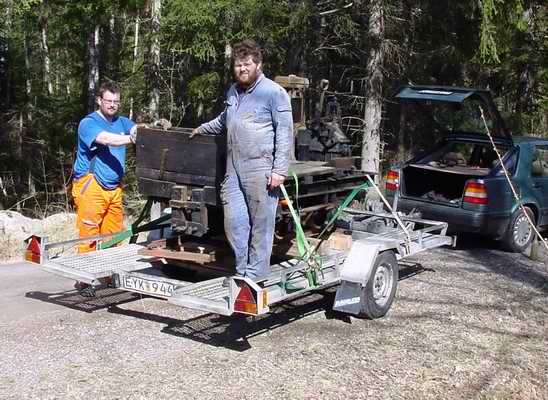
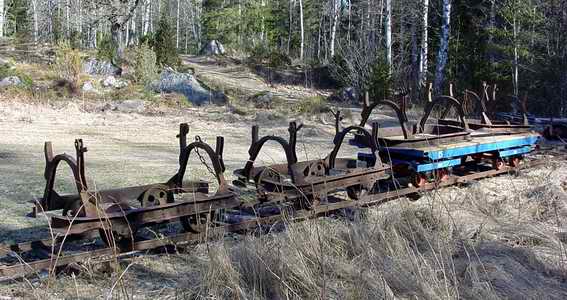
At a second visit to Bolmen another bunch of skip wagons were collected, more accurately four frames and three troughs. The wagons are in need of repair before they can be used at OkJ.

Just as last time, inscriptions "SAK" were found on most wagons. See below for an explanation.
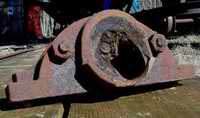
This is what one of the roller bearings looked like. Beyond all rescue !
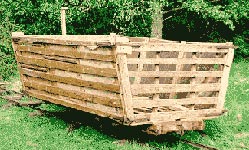
Wagon 41, a peat wagon that came to OkJ from a peat moss outside Motala, has been given to Aska Vedbana outside Vadstena. The wagon was too wide for OkJ and has never been used there. At AVB it will be used to transport fire wood.
Click the picture to view more picture from the salvage expedition
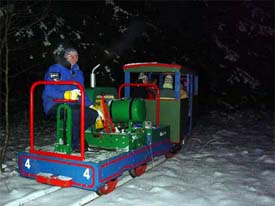
.jpg)
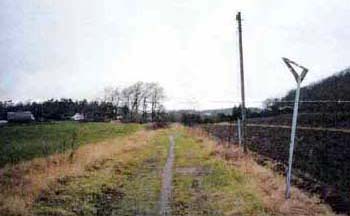
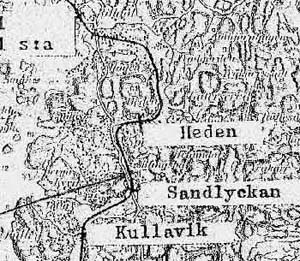 The warning signal was placed at a road crossing near Sandlyckan on the since long abandoned railway between Göteborg and Särö. Now it can be found on Örkaggen Railway where it stands by a path crossing the line close to Örkaggsnäs Depot.
The warning signal was placed at a road crossing near Sandlyckan on the since long abandoned railway between Göteborg and Särö. Now it can be found on Örkaggen Railway where it stands by a path crossing the line close to Örkaggsnäs Depot.
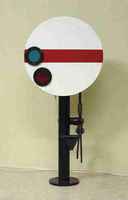 This disc signal is manufactured by "Nederlandse Maschienenfabriek" in Alkmaar in the Netherlands. I received it as a gift around 1990. It was originally delivered to Bangladesh but was for unknown reasons returned to Alkmaar where it was refurbished before I got it. It is not used at the Örkaggen Railway, but copies made by me are.
This disc signal is manufactured by "Nederlandse Maschienenfabriek" in Alkmaar in the Netherlands. I received it as a gift around 1990. It was originally delivered to Bangladesh but was for unknown reasons returned to Alkmaar where it was refurbished before I got it. It is not used at the Örkaggen Railway, but copies made by me are.
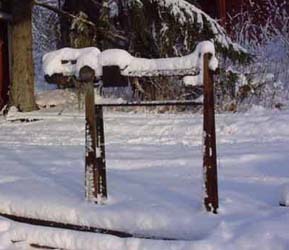 The scale is manufactured by the "Waagen & Maschienen Fabriek Albert Aeffecke" in Stettin in 1910. I found it stowed away in a shed at the abandoned peat factory in Tranberga outside Motala. The scale is fitted with rails so it is preferably placed in a spur to which the wagon to be weighed is marshalled. It functions in the same manner as a bathroom scale of older model. First you adjust the big balance weight in steps of 50 kg, then you fine adjust to balance with the smaller weight. The scale is suited for weights of up to 1250 kg. To calculate the weight of the load one must of course weigh both the loaded wagon and the empty wagon. The difference is the weight of the load.
The scale is manufactured by the "Waagen & Maschienen Fabriek Albert Aeffecke" in Stettin in 1910. I found it stowed away in a shed at the abandoned peat factory in Tranberga outside Motala. The scale is fitted with rails so it is preferably placed in a spur to which the wagon to be weighed is marshalled. It functions in the same manner as a bathroom scale of older model. First you adjust the big balance weight in steps of 50 kg, then you fine adjust to balance with the smaller weight. The scale is suited for weights of up to 1250 kg. To calculate the weight of the load one must of course weigh both the loaded wagon and the empty wagon. The difference is the weight of the load.
Wheels and bearings
.jpg)
This roller bearing is manufactured by the wellknown railway equipment manufacturer Orenstein & Koppel of Berlin, Germany.
.jpg)
Another bearing from the same manufacturer

Double flanged wheels were never common but were used in some places. They have the advantage that they rarely derail even if the track is of poor quality.